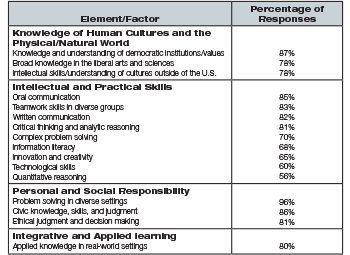Question:
“In 2014, my company started a three-year strategic planning process, including new vision, mission and values statements, with the goal of focusing the future direction of the company. This year has been spent extending that work and we are looking ahead to 2016 for a roll-out of a comprehensive learning and development program that will enable staff to operate at their top performance level and identify and prioritize learning, training and development needs for each division, team and individual. Our goals include growing the capability of managers and employees and addressing talent and development needs so that we can build a motivated, engaged and high-performing workforce. My question for you has to do with the focus of such a comprehensive program. Can you comment on emerging trends regarding the focus of training programs?”
Answer:
Wisconsin employers face some challenging circumstances as 2015 ends and as we ponder what lies ahead. In the recent past, this has been a job loss or slow jobs growth state. Wisconsin has an aging workforce with one of the highest percentages of baby boomers (people born between 1946 and 1964) in the country (i.e., emerging outflow of workers due to retirement). About 25 percent of our workforce holds a bachelor’s degree (which puts us below the national average). We are a “brain drain” state in the sense that young people (especially young women) earn their degrees and then take jobs outside of Wisconsin.
Cast in this context, the reader’s question is a strategic matter for his/her organization. Indeed, in my opinion, such a question should be a strategic matter for any employer that wants to remain competitive, relevant and agile.
The central issue raised by the reader, although not explicitly referenced, is the extent to which the organization is a “learning organization.” A learning organization counts the provision of learning as one of its focal points, in addition to whatever good, product, or service it offers to the marketplace. At the individual level, learning promotes employee growth and development (i.e., people are able to do more). At the organizational level, learning promotes adaptation and renewal (i.e., organizations are able to innovate and change).
I applaud the reader’s organization for making a commitment to learning consistent with a learning organization approach (i.e., systematic and organization-wide). The question is, “What learning should be offered?” While each organization, given that it operates in its own unique environment, will have different learning needs (an organization-specific needs analysis should undergird any learning program), there are some emerging findings I can share that the reader and others involved in providing “leading edge” learning programs will want to reflect upon.
The table accompanying this column is a key piece of data that I would reference for anyone who is serious about building a learning and development program. In 2015, Hart Research Associates on behalf of the American Association of Colleges and Universities conducted a national survey of employers to identify the kinds of knowledge, skills or attributes they are seeking from prospective employees. The list is an interesting one because it points out that employers are seeking more than technical knowledge and skills. Interestingly, 91 percent of employers surveyed said that a demonstrated capacity to think critically is more important than an employee’s undergraduate major. More than 80 percent of the employers surveyed rated critical thinking, analytical reasoning, written and oral communication, teamwork, ethical reasoning, and applied knowledge in real-world settings as “very important.”
Employer priorities and consensus on college learning outcomes

I should also point out that my recent experience in supporting learning initiatives, both here in Wisconsin and across the country, mirrors the Hart Research Associates survey. What I see unfolding is a movement away from a sole focus on so-called “hard skills” (i.e., technical skills) toward a blended approach in which both hard and “soft skills” (i.e., behavioral and interpersonal skills, as captured in the accompanying table) are the focus of learning and training programs. The reason for this is, of course, the reality that such skills are necessary to perform effectively in our evolving Information Age. The manner in which we do our work is becoming more complex. Accordingly, the complexity or sophistication of the learning programs we offer must correspondingly evolve.
In short, the pursuit of competency-based learning programs is the emerging “best practice” with which the reader should become familiar. Competencies are factors of the kind in the table; they are a synthesis of knowledge, skills, abilities and behaviors such as problem solving, collaborating/teaming, critical thinking and so on. Many organizations, including increasing numbers of colleges and universities, are building and deploying competency-based learning programs. More and more “learning partnerships” are springing up in which colleges/universities overtly partner with employers to design focused learning programs that can be certified/accredited. I can speak to this trend with some insight because I have served as the program architect (i.e., “integrator”) in a number of instances, including initiatives in Wisconsin and around the country.
Here in Wisconsin, Gov. Scott Walker signed the Wisconsin Fast Forward program into law in March 2013 with the near-unanimous support of the state Legislature. Wisconsin Fast Forward helps address the state’s need for skilled workers. The program created training grants and makes other investments to prepare workers for jobs available today and in the years to come. Wisconsin Fast Forward will make up to $15 million in grants available to support employer-led worker training. The Department of Workforce Development’s new Office of Skills Development administers the program.
As the Council for Adult and Experiential Learning has documented, such learning partnerships promote flexibility for adult learners, increased accountability for learning outcomes that meet employer needs, and in many cases, a substantial reduction in the cost of a college education. Of course, implementing these learning partnerships involves numerous changes, including challenging some of the most “sacred cows” in higher education.

